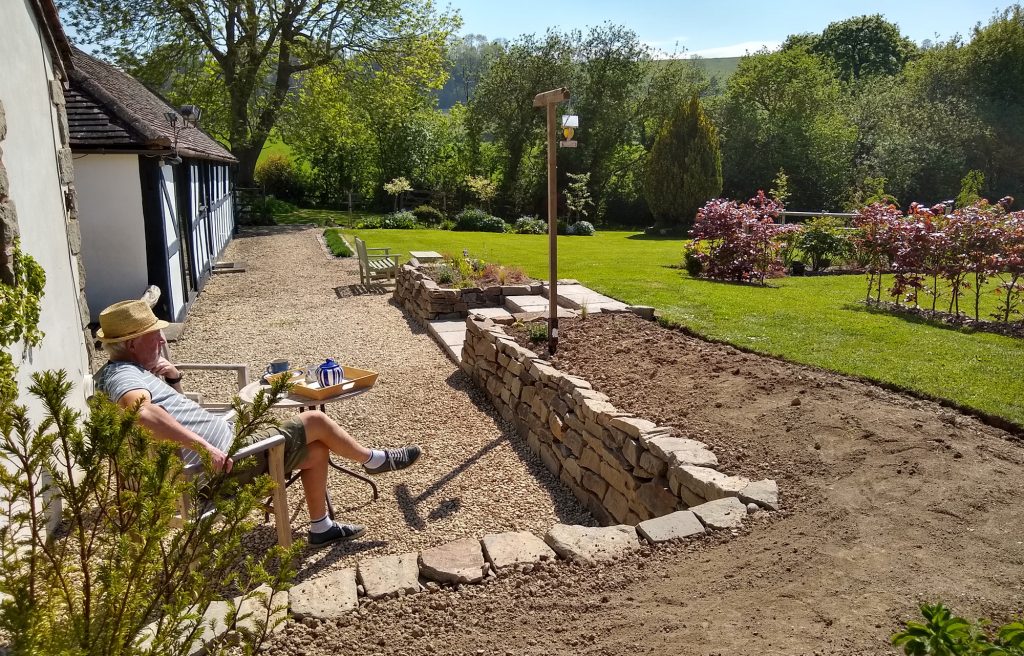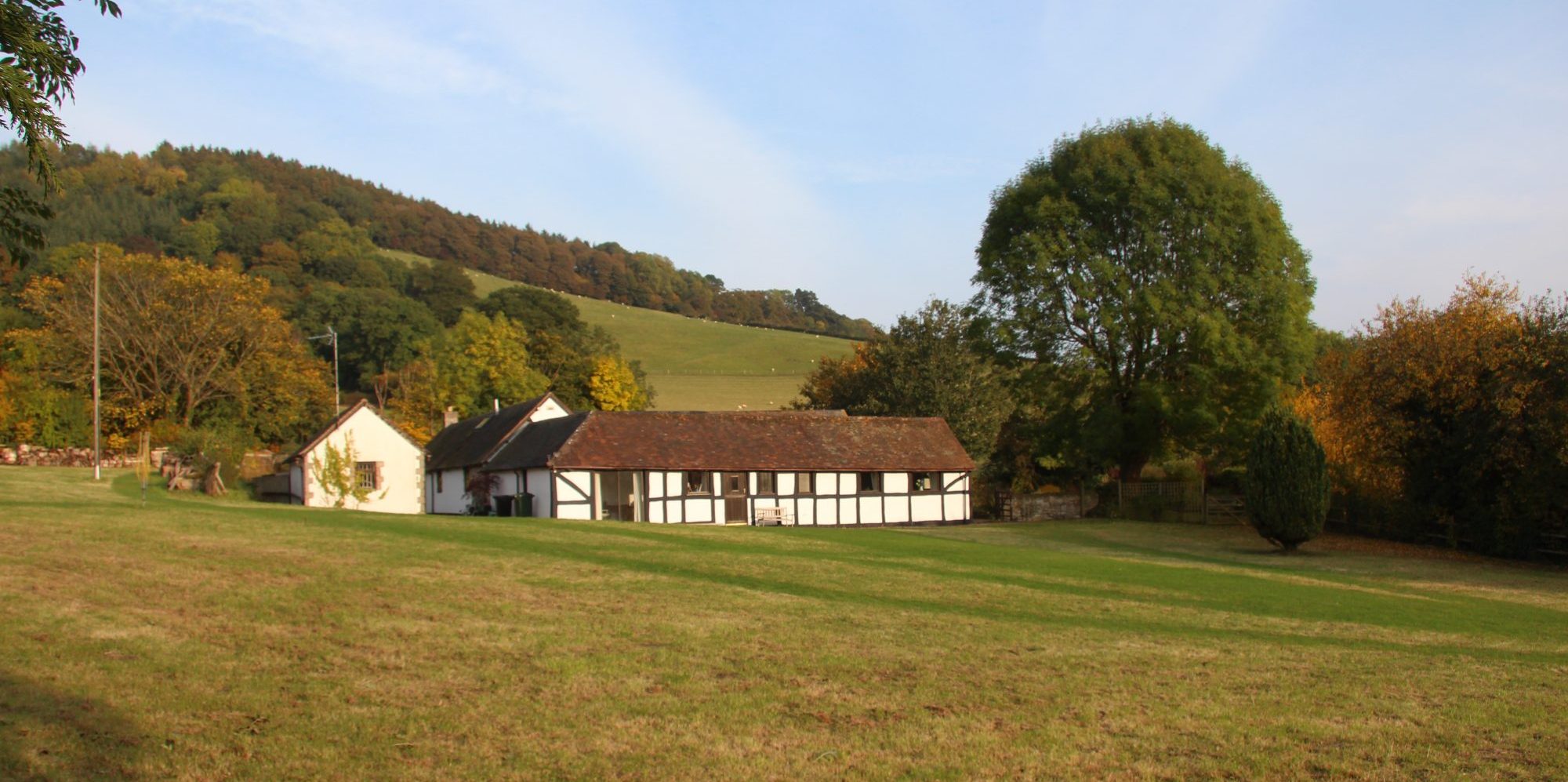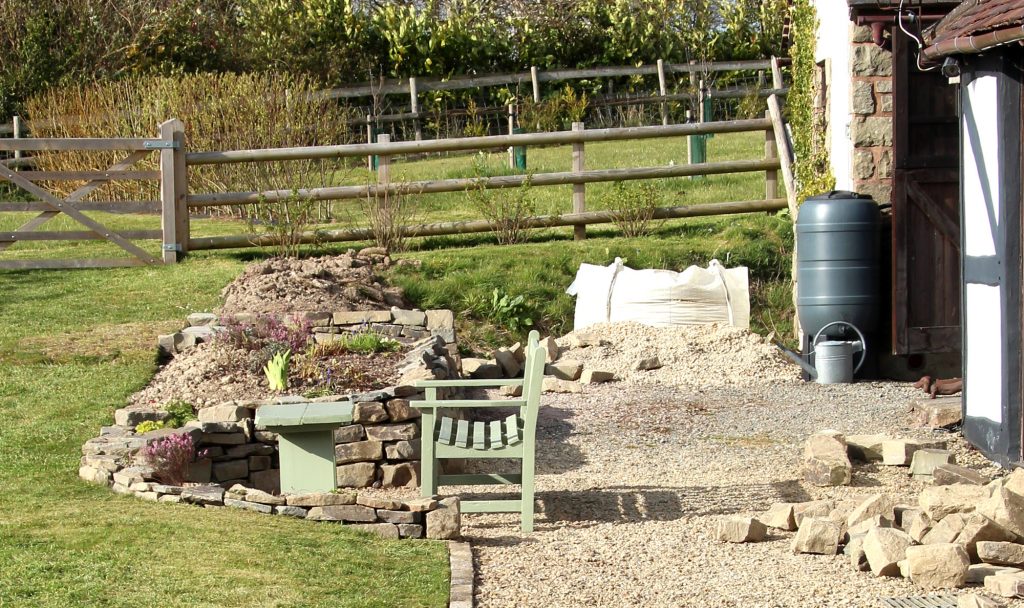
April was a lovely sunny month, ideal wall building weather. But before more stones could be laid, we had to move a large builder’s sack of gravel, grit and earth which had been scraped off the drive when it was resurfaced a year ago and dumped here, out‑of‑the‑way. Now it was in the way of our current project, our new sunny seating area. Over a couple of days, the entire heap was sifted and sorted, resulting in a pile of gravel to be used later, plus the large builder’s sack now full of grit and earth, placed in a different, and currently out‑of‑the‑way spot.
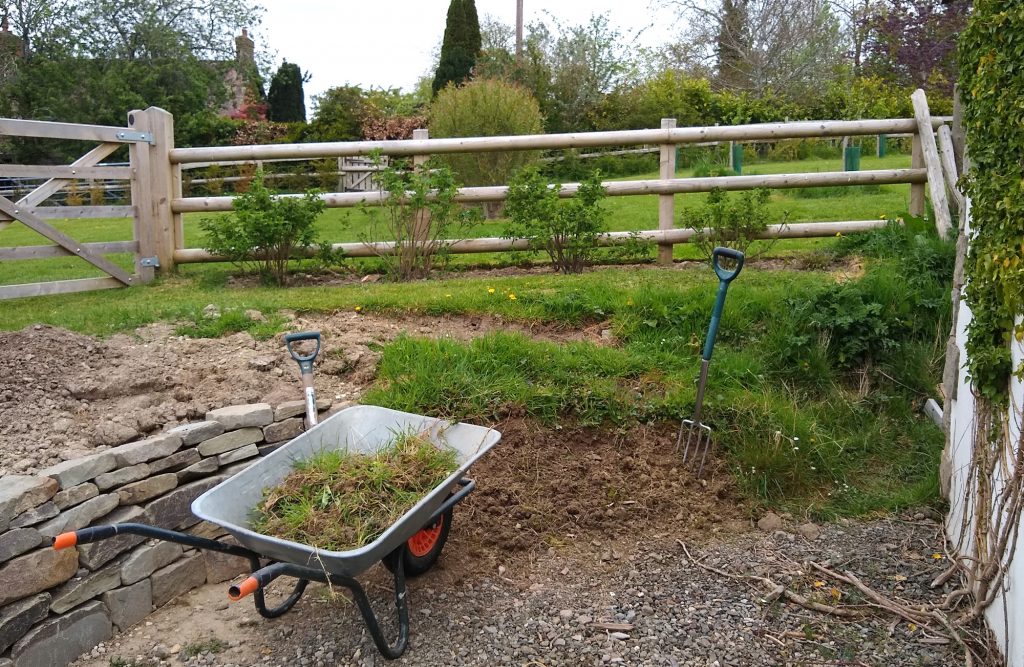
The waterbutt was re-positioned from the front corner of the outbuilding to be out of sight at the rear. We could now tackle the bank. Grass, dandelions, ivy, nettles, dock, giant hogweed – all growing in a deep slope of solid clay. Gradually, I removed all the vegetation and as much of the tenacious roots as I could – an arduous and tiring task – to uncover the unyielding clay. How far to cut it back? Just a gentle curve or further back to create a rectangle? Still weary from the weeding, I was tempted to stop earlier but was persuaded – and helped – to ‘do it properly’. Thus the clay was sliced back to create a sharp right‑angled corner.
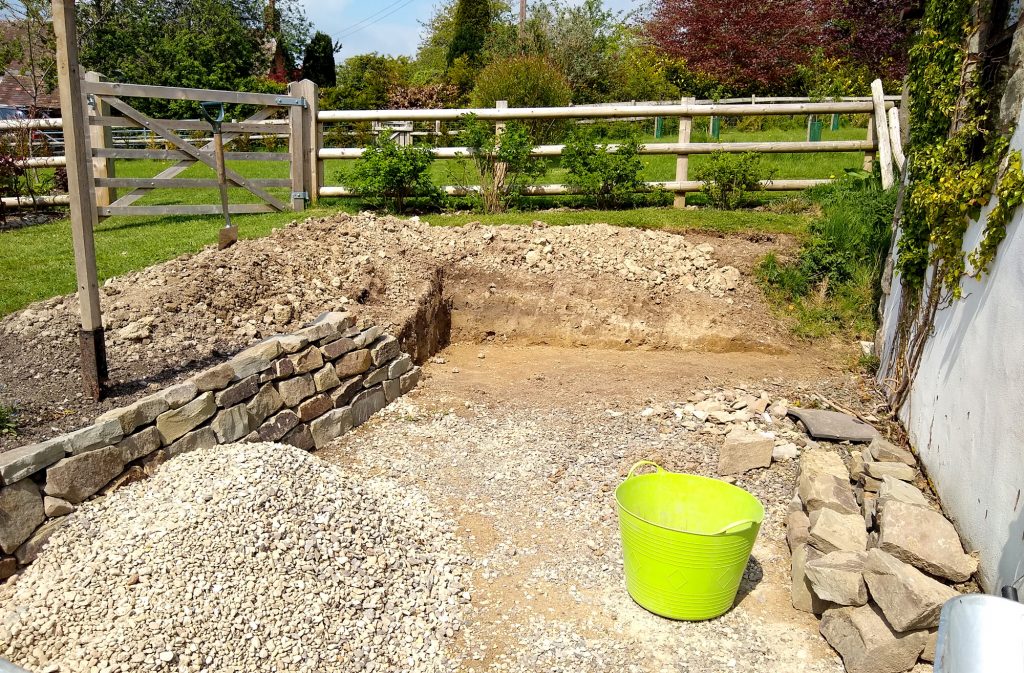
Actual wall building could now begin. We had started with three tons of walling, and a lot had already been used in the first part of the wall, but I had kept back a number of larger stones and smaller flatter stones, crucial for the bottom and top of the wall. The walling, we had been told, was sourced from a limestone quarry not far away, just across the Welsh border. The stones were random sizes and shapes and varied in their density – some being surprisingly heavier than others of similar size. Of course, their uneven shapes added to the challenge of wall building. I began the bottom row.
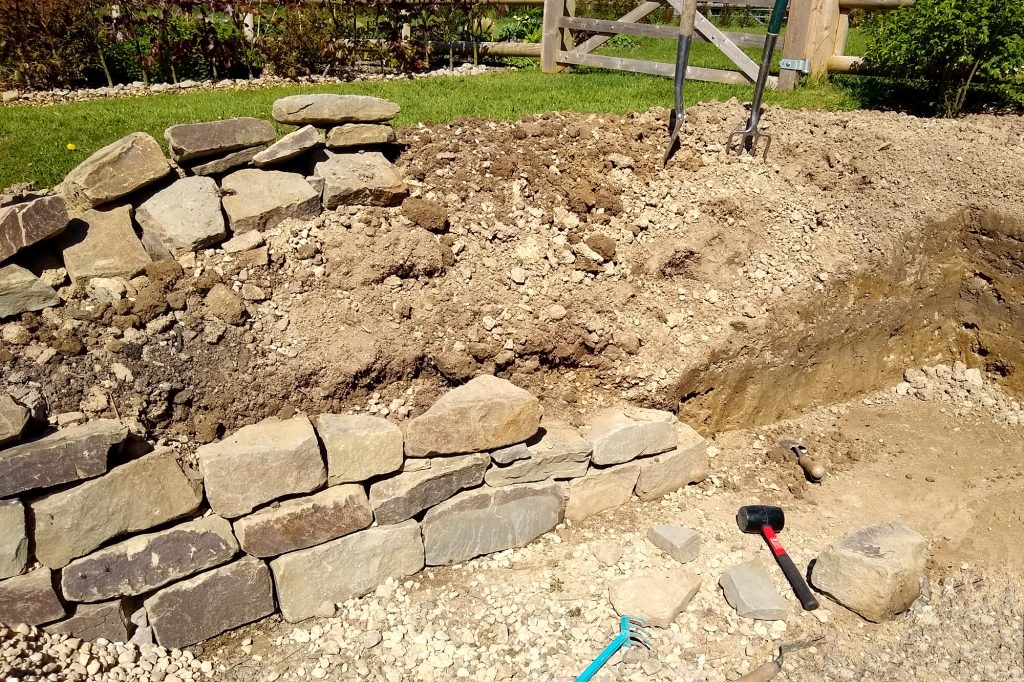
As I selected and placed the large stones, I became aware of a buzzing. A continuous and persistent buzzing. I sat and watched awhile. Small bees were going in and out of holes in the wall of clay. Back and forth. I did some research and was reassured to discover that miner bees – for such they were -very rarely sting, and if they do, it isn’t very severe. The bees accompanied me incessantly as I constructed the wall; even after the stones were put in place, they persevered to find their tunnel homes behind the wall.
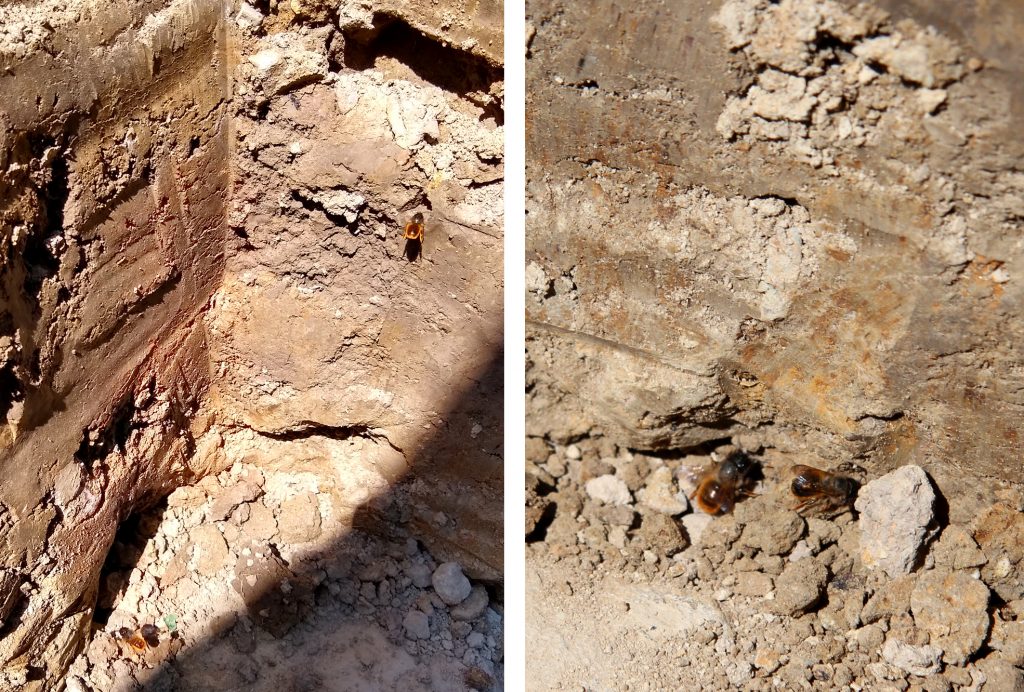
Under a hot early spring sun, I juggled with the stones, starting with the corner and gradually incorporating a couple of extra rows, to make the wall slightly taller at the far end. The process involved numerous rearrangements to make pleasing – or at least acceptably pleasing – rows. With a quickly reducing pile of stones from which to choose, the 3D jigsaw got trickier, though when there are few stones left, the options are inevitably reduced.
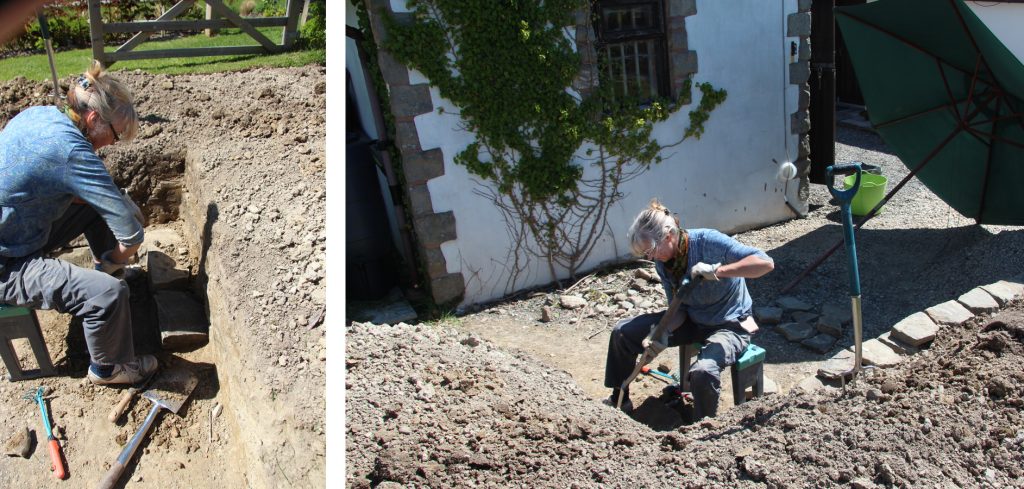
Three tons had been a very rough estimate of how much we would need, and I was prepared to reduce my walling plans if the supply of stones ran out. It was only at the end, that I could I see that there was enough – though only just enough – to curve the wall towards the rear of the outbuilding, bringing it to a satisfying termination. The wall was finished.
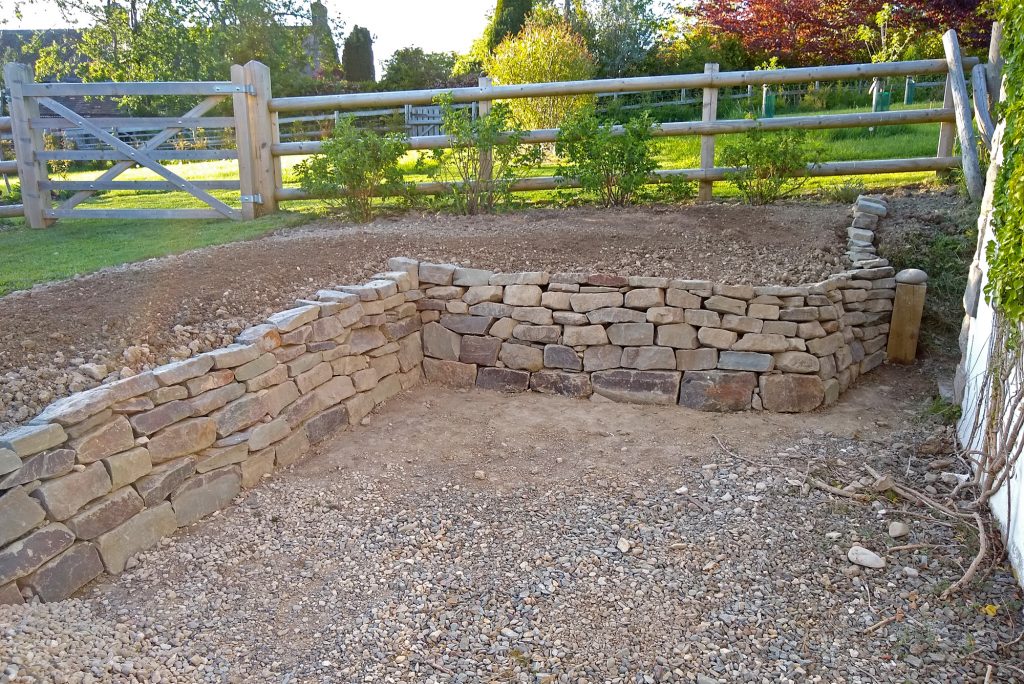
The excavated clay was dug over to create a large new raised bed, and the sifted gravel spread back over the ground, ready for our new seating area. The next part of the plan is to construct a pergola between the outbuilding and the new raised bed to provide shade over this lovely suntrap. Planting will have to wait until the pergola is in situ, though I have planted a few small things – some of which have been pushed up by the mole, others dug up by the rabbit! In the meantime, we have a lovely place to sit, admire our handiwork and enjoy the view across our Shropshire garden.
